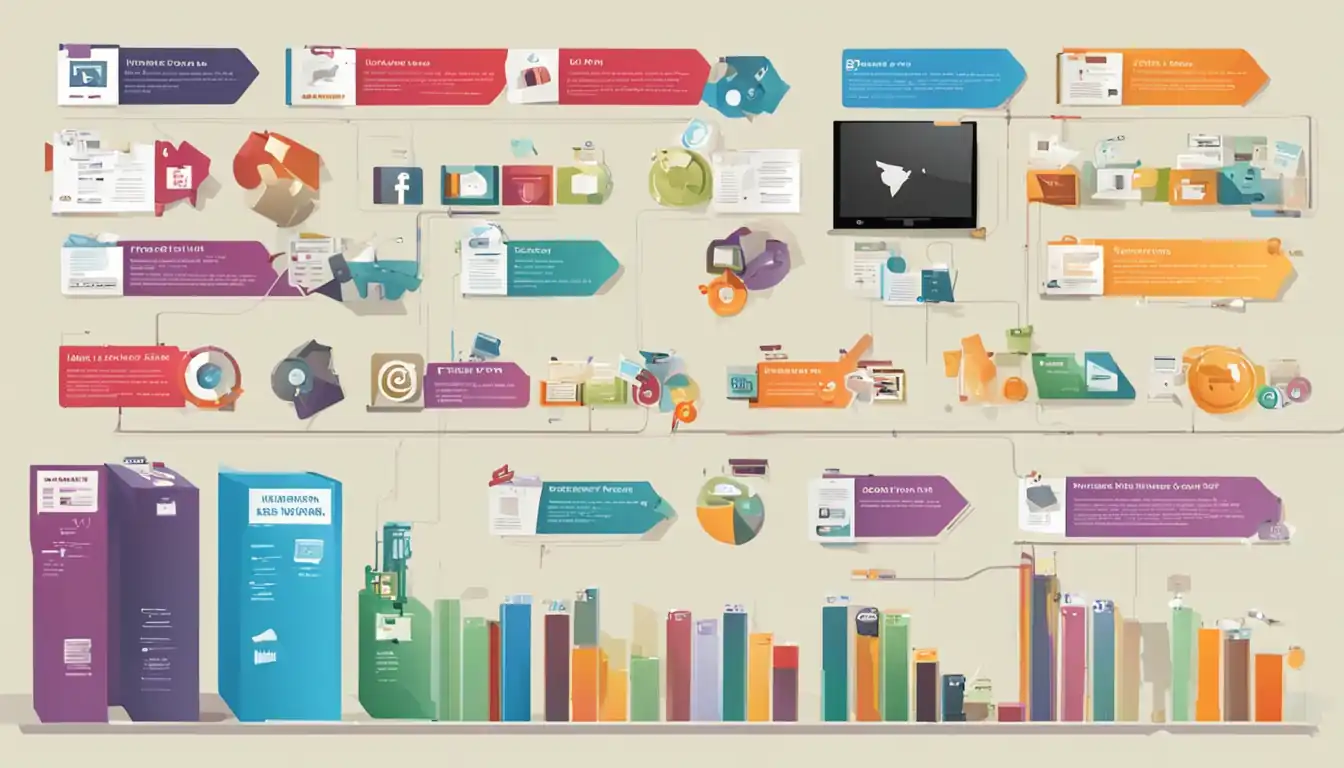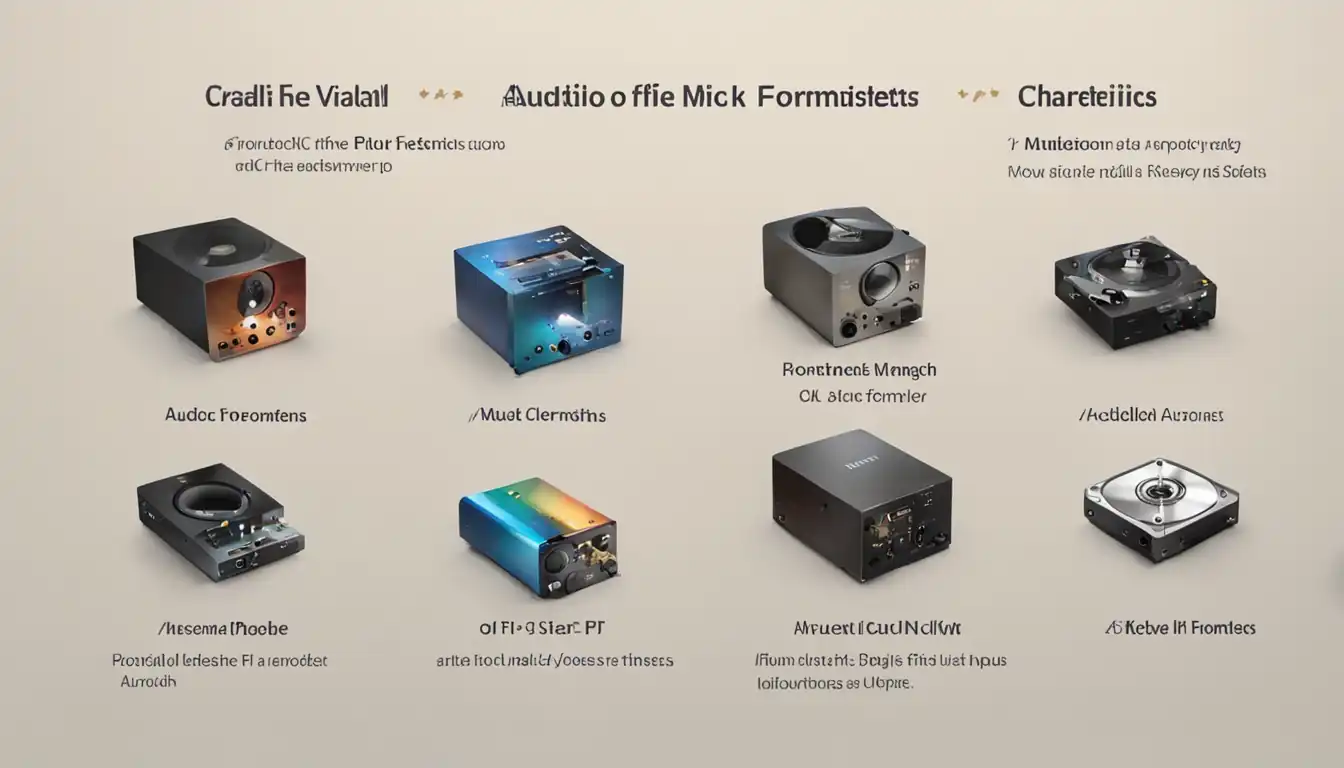Understanding File Types in Multimedia: A Comprehensive Guide

Multimedia files are an integral part of our digital world, allowing us to capture and share images, audio, video, and animations. Understanding the different file types used in multimedia is crucial for creating and managing content effectively. In this comprehensive guide, we will explore the various file types, their uses, and how to choose the right file type for your project.
Introduction to Multimedia File Types
What Are Multimedia Files?
Multimedia files are digital files that contain a combination of different media elements, such as images, audio, video, and animations. These files are used in various applications, including websites, presentations, advertisements, and entertainment media.
Importance of Different File Types in Multimedia
Different file types serve different purposes in multimedia. Each file type has its own characteristics, advantages, and limitations. Understanding these differences is essential for optimizing the quality, compatibility, and performance of multimedia content.
Common Multimedia File Categories

Multimedia files can be categorized into different types based on the media they contain. Let's explore the most common categories:
Image File Types
Images are a fundamental part of multimedia content. They can be categorized into two main types:
Raster Image Files
Raster image files, also known as bitmap images, are made up of a grid of pixels. Each pixel contains color information, which collectively forms the image. Common raster image file types include JPEG, PNG, and GIF.
Vector Image Files
Vector image files are created using mathematical formulas that define the shapes and colors of the image. Unlike raster images, vector images can be scaled without losing quality. SVG is a popular vector image file format.
Audio File Types
Audio files are used to store and play back sound. They can be categorized into various formats, including:
- MP3 (MPEG Audio Layer III): A widely used audio file format known for its high compression and good sound quality.
- WAV (Waveform Audio File Format): A lossless audio file format that preserves the original audio quality.
- AAC (Advanced Audio Coding): A popular audio file format that offers better sound quality than MP3 at lower bitrates.
- FLAC (Free Lossless Audio Codec): A lossless audio file format that provides high-quality audio compression.
- OGG (Ogg Vorbis): A free and open-source audio file format that offers high-quality audio compression.
Video File Types
Video files are used to store and play back moving images. Some common video file formats include:
- MP4 (MPEG-4 Part 14): A widely supported video file format that offers good compression and quality.
- AVI (Audio Video Interleave): A multimedia container format that supports both audio and video data.
- MOV (QuickTime File Format): A file format developed by Apple for storing multimedia data.
- WMV (Windows Media Video): A video file format developed by Microsoft for Windows Media Player.
- FLV (Flash Video): A video file format commonly used for web streaming and online video platforms.
Animation File Types
Animations are sequences of images or frames that create the illusion of motion. Some common animation file types include:
- SWF (Small Web Format): A file format used for multimedia, vector graphics, and interactive content.
- HTML5 Animations: Animations created using HTML5, CSS, and JavaScript, which are supported by modern web browsers.
- Animated GIFs: Graphics Interchange Format files that contain a series of images or frames to create a looping animation.
Popular File Formats for Images
Images play a vital role in multimedia content, and choosing the right file format is crucial. Here are some popular image file formats and their characteristics:
JPEG (Joint Photographic Experts Group)
JPEG is a widely used image file format that supports high compression. It is suitable for photographs and complex images with many colors. However, JPEG is a lossy compression format, meaning it sacrifices some image quality to achieve smaller file sizes.
PNG (Portable Network Graphics)
PNG is a lossless image file format that supports transparency. It is ideal for images with sharp edges, text, and graphics. PNG files tend to have larger file sizes than JPEG but offer better image quality.
GIF (Graphics Interchange Format)
GIF is a widely supported image file format that supports animation. It uses lossless compression and is suitable for simple images, logos, and animations with limited colors. GIF files are often used for web graphics and social media.
SVG (Scalable Vector Graphics)
SVG is a vector image file format that allows for infinite scalability without losing quality. It is ideal for logos, icons, and graphics that need to be resized frequently. SVG files are supported by most modern web browsers.
RAW Image Formats
RAW image formats are uncompressed and unprocessed image files that retain all the original data captured by the camera. They offer the highest image quality but require specialized software for editing and processing.
Audio File Formats Explained

Audio files are used to store and play back sound, and choosing the right audio file format is essential for optimal sound quality and compatibility. Here are some commonly used audio file formats:
MP3 (MPEG Audio Layer III)
MP3 is a widely supported audio file format known for its high compression and good sound quality. It is compatible with most devices and is commonly used for music and audio streaming.
WAV (Waveform Audio File Format)
WAV is a lossless audio file format that preserves the original audio quality. It is commonly used for professional audio production and archiving. However, WAV files tend to be larger in size compared to other audio formats.
AAC (Advanced Audio Coding)
AAC is a popular audio file format that offers better sound quality than MP3 at lower bitrates. It is commonly used for music streaming and is supported by most devices and platforms.
FLAC (Free Lossless Audio Codec)
FLAC is a lossless audio file format that provides high-quality audio compression. It retains the original audio quality while reducing file size. FLAC files are ideal for audiophiles and music enthusiasts who prioritize audio fidelity.
OGG (Ogg Vorbis)
OGG is a free and open-source audio file format that offers high-quality audio compression. It provides similar audio quality to MP3 but with smaller file sizes. OGG files are commonly used for streaming and online distribution.
Video File Formats and Their Uses
Video files are used to store and play back moving images, and choosing the right video file format is crucial for optimal playback and compatibility. Here are some commonly used video file formats:
MP4 (MPEG-4 Part 14)
MP4 is a widely supported video file format that offers good compression and quality. It is compatible with most devices and platforms, making it ideal for sharing videos online and offline.
AVI (Audio Video Interleave)
AVI is a multimedia container format that supports both audio and video data. It is widely supported but has larger file sizes compared to other video formats. AVI files are commonly used for video editing and archiving.
MOV (QuickTime File Format)
MOV is a file format developed by Apple for storing multimedia data. It is commonly used for video editing, playback on Apple devices, and online streaming. MOV files offer good quality and compatibility.
WMV (Windows Media Video)
WMV is a video file format developed by Microsoft for Windows Media Player. It offers good compression and is commonly used for streaming and playback on Windows devices. However, WMV files may have limited compatibility with non-Windows platforms.
FLV (Flash Video)
FLV is a video file format commonly used for web streaming and online video platforms. It offers good compression and supports interactive features. However, with the decline of Adobe Flash, the usage of FLV has decreased in recent years.
Animation and Other Multimedia File Types

Animations and other multimedia file types add interactivity and visual appeal to digital content. Let's explore some commonly used file types in this category:
SWF (Small Web Format)
SWF is a file format used for multimedia, vector graphics, and interactive content. It was widely used for web animations and games but has become less popular due to compatibility issues and the decline of Adobe Flash.
HTML5 Animations
HTML5 animations are created using HTML, CSS, and JavaScript. They are supported by modern web browsers and offer a more lightweight and flexible alternative to SWF files. HTML5 animations are commonly used for web design and interactive content.
Animated GIFs
Animated GIFs are Graphics Interchange Format files that contain a series of images or frames to create a looping animation. They are widely supported and commonly used for memes, social media, and simple web animations.
How to Choose the Right File Type for Your Project

Choosing the right file type for your multimedia project depends on several factors. Here are some key considerations:
Factors to Consider
Quality
Consider the desired image, audio, or video quality for your project. Some formats offer higher compression but sacrifice quality, while others prioritize preserving the original content.
Compatibility
Ensure that the chosen file format is compatible with the devices, platforms, and software you intend to use. Consider the playback capabilities and supported formats of your target audience.
File Size and Compression
Take into account the file size and compression requirements of your project. Smaller file sizes are preferable for web content to ensure faster loading times, while larger file sizes may be acceptable for offline or high-quality applications.
Best Practices for Managing Multimedia Files
Managing multimedia files effectively is crucial for maintaining organization and optimizing workflow. Here are some best practices to consider:
Organizing and Naming Your Files
Create a logical folder structure and use descriptive filenames to easily locate and identify your multimedia files. Consider using a consistent naming convention to ensure consistency and ease of management.
Using the Right Software for Editing
Choose the appropriate software for editing and manipulating your multimedia files. Different software applications offer various features and compatibility with specific file formats.
Converting Between File Types
When necessary, convert your multimedia files between different formats using reliable conversion tools. Ensure that the converted files maintain the desired quality and compatibility.
The Future of Multimedia File Formats
As technology advances, new file types and standards continue to emerge in the multimedia industry. Here are some trends to watch out for:
Emerging File Types and Standards
Keep an eye on emerging file types and standards, such as WebP for images and WebM for videos. These formats offer improved compression and performance, catering to the evolving needs of multimedia content creators.
The Role of Codecs in Multimedia File Types
Codecs play a crucial role in multimedia file types by encoding and decoding data. Stay updated on the latest codec advancements to ensure optimal compatibility and quality for your multimedia projects.
Conclusion
Understanding file types in multimedia is essential for creating, managing, and optimizing digital content. By familiarizing yourself with the various image, audio, video, and animation file formats, you can make informed decisions to enhance the quality, compatibility, and performance of your multimedia projects.
Recap of Key Points
- Multimedia files contain a combination of images, audio, video, and animations.
- Different file types serve different purposes and have their own characteristics.
- Image file types include raster images (JPEG, PNG, GIF) and vector images (SVG).
- Audio file formats include MP3, WAV, AAC, FLAC, and OGG.
- Video file formats include MP4, AVI, MOV, WMV, and FLV.
- Animation file types include SWF, HTML5 animations, and animated GIFs.
- Consider factors like quality, compatibility, and file size when choosing a file type.
- Organize and name your files, use the right software for editing, and convert between file types when necessary.
- Stay updated on emerging file types, standards, and codecs in the multimedia industry.
Final Thoughts on Multimedia File Types
As technology continues to evolve, so do multimedia file formats. It's important to stay informed about the latest advancements and trends to ensure that your multimedia content remains relevant and optimized. By understanding the characteristics and uses of different file types, you can create engaging and high-quality multimedia experiences.